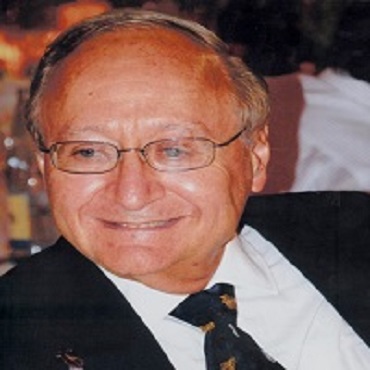Scientific Program

Mervyn Deitel
Director MGB-OAGB Club, Canada
Title: An Overview Of Bariatric Surgery To The Present
Biography:
Mervyn Deitel was born in Toronto Canada in 1936. He graduated in Medicine from the University of Toronto in 1961. He trained in surgery at Beth Israel, Bellevue and N.Y. University Hospitals in New York, Roswell Park Cancer Institute in Buffalo and trauma at Parkland Memorial in Dallas. He started I.V. hyperalimentation (TPN) in 1967 in Canada. He started bariatric surgery in Canada and in 1970 he stated performing bariatric surgery, then becoming a Professor of Nutritional Sciences and Surgery at University of Toronto. He was a Founding Member of the ASBS in Iowa 1983. He was President of ASBS 1994, and was awarded the Outstanding Achievement Award of the ASMBS Foundation in 2004. In 1991, he was the Founding Editor of Obesity Surgery, Editor-in-Chief of Obesity Surgery from 1991 to 2008, and remains Emeritus Editor-in-Chief. He was a Founding Member of the International Federation for the Surgery of Obesity (IFSO) in Stockholm in 1995, served as the first Executive Director of IFSO, and was awarded the Golden IFSO pin in 1999 and Honorary Life Membership in 2005. He is a Past President of the Roswell Park Surgical Society, Fellow of the American College of Nutrition, and Member of the Society of Surgical Oncology, American Head & Neck Society and Canadian Association of General Surgeons. He served on the Editorial Board of Journal of American College of Nutrition and is an advisor in nutrition to the American Journal of Family Practice. He is Chief Advisor of the International Bariatric Club.
Abstract
With increasing high-caloric fast-food and sedentary lifestyle, worldwide obesity has been increasing for the past 50 years. For morbid obesity in the 1970s, jejunoileal bypass (JIB) developed as a malabsorptive operation; JIB had specific complications which tied down the surgeon. The horizontal loop gastric bypass of Mason became preferred; because tension on the loop anastomosis had potential for leak, gastric bypass was changed to a Roux-en-Y configuration (RYGB), which has been performed extensively. Gastroplasties developed as restrictive operations in the 1980s, initially horizontal, followed by vertical banded gastroplasty (VBG). In 1983, the American Society for Bariatric Surgery (ASBS) was formed at a meeting in Iowa, and has vastly enlarged. In 1991, I started publishing the Obesity Surgery journal as Editor-in-Chief, which became the official journal of IFSO, and rapidly progressed to high ranking. In 1995, I was one of the Founders of the International Federation for the Surgery of Obesity (IFSO), which we formed in Stockholm; it has enlarged to 70 international member-societies. In the 1990s, the adjustable gastric band (AGB) was placed to restrict the very proximal stomach (connected by tubing to a subcutaneous reservoir), and the AGB was suitable as a laparoscopic operation. Subsequently, all bariatric operations have been able to be performed laparoscopically. From the malabsorptive biliopancreatic diversion, the duodenal switch (DS) developed; food enters a lesser-curvature gastric sleeve, and the divided proximal duodenum is anastomosed to the divided ileum 100 cm proximal to ileocecal valve. In 2000, sleeve gastrectomy (the first part of the DS alone) developed as a stand-alone operation, but dissection at the cardia has led to devastating leaks plus GE reflux and occasional Barrett’s esophagus. The Mini-Gastric Bypass (MGB), as well as its One Anastomosis Gastric Bypass (OAGB) variant, with a long sleeve anastomosed antecolic as a wide gastrojejunostomy at ~200 cm has gained remarkable popularity, as a simple malabsorptive operation, effectively reversing the co-morbidities of morbid obesity. Postop nutritional requirements must be followed. Type 2 diabetes usually resolves after MGB-OAGB and is being performed in patients with lesser obesity.
- Human Nutrition
- Pediatric Nutrition
- Maternal Nutrition
- Sports Nutrition and Fitness
- Plant Nutrition
- Malnutrition
- Diet and Cancer
- Obesity and underweight
- Eating Disorder
- Dietary and Nutritional Supplements
- Artificial Additives
- Nutritional Immunology & Food Allergies

